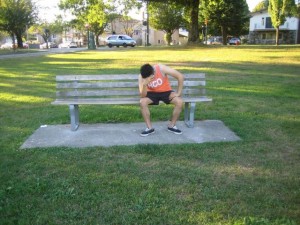A ruptured eardrum happens when there is a hole or tear in the thin membrane that separates the ear canal and the inner ear. The membrane can be injured by an infection or trauma such as over-insertion of a cotton swab, loud noises, changes in the pressure of air and injuries to the head. A damaged eardrum typically heals within a few weeks without requiring any form of treatment
Symptoms
- A clear, pus-filled or blood that drains from the ear
- Loss of hearing
- Ringing in the ears or tinnitus
- Vertigo or spinning sensations
- Nausea or vomiting caused by vertigo
- Pain in the ear that disappears suddenly
A severe head injury such as a skull fracture can cause dislocation or damage the middle and inner structures as well as the eardrum.
Causes
- Middle ear infection or otitis media that is caused by the accumulation of fluids in the middle ear. The pressure from these fluids can result to rupture of the eardrum.
- Acoustic trauma or loud sounds or blasts from an explosion or gunshots like an overpowering sound wave can result to tearing in the eardrum.
- Barotrauma which is stress that is being exerted in the eardrum when the pressure of air in the middle ear and air pressure from the environment are not balance. If the pressure is very severe, it can cause the eardrum rupture.
- Other activities that can cause rupturing of the eardrum such as scuba diving, a strong impact of an automobile air bag and direct blow to the ear.
- Foreign objects inside the ear such as a cotton swab or hairpin can puncture or tear the eardrum
- A severe head injury such as a skull fracture can cause dislocation or damage the middle and inner structures as well as the eardrum.
Treatment
- Keep the ears dry, avoid placing water or other liquids inside the ear in order to help avoid any infection and delay the healing of the condition. When taking a bath, use a shower cap or apply Vaseline on cotton balls and place them inside the ears while taking a shower in order to help make the affected area dry. Avoid swimming or submerging the head in water while the ruptured eardrum is not yet fully healed.
- Avoid cleaning the ears. Just let the eardrum heal by itself completely. Avoid using cotton swabs when cleaning the ears. Avoid inserting any type of objects for removing earwax inside the ear in order to help prevent making the condition worse.
- Apply a warm compress or a heating pad into the affected area to help reduce the swelling and pain.
- Avoid blowing the nose since the pressure caused by blowing the nose can make the condition worse.
- Take the prescribed over-the-counter pain medications to help lessen the pain and inflammation due to a ruptured eardrum.
- Get medical help immediately for any middle ear infections in order to help prevent ruptured or perforated eardrum.

